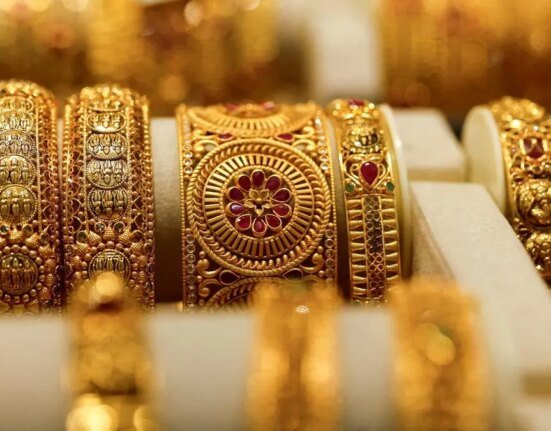Two historical artefacts have been officially declared treasure following separate inquests in Cornwall.
A rare gold ‘touch piece’ from the reign of King James and a gold posie ring, both confirmed to be more than 300 years old, have been found in separate locations in the Duchy.
Post Medieval Posie Ring Discovered in the District of Carrick:
On January 29, 2023, Mr Alan Williams discovered the ring using a metal detector on land with the permission of Mr and Mrs Hereford, owners of the land.
Identified as a Medieval-style Posie ring, the gold band is distinguished by the clear inscription engraved upon it: ‘If Worthy None, So Happy’, followed by the initials ‘ET’.
The band has an internal diameter of approximately 18 millimetres and a width of 5mm.
During the inquest on Monday, June 2, Assistant Coroner for Cornwall, Guy Davies, read out a curator’s report which revealed the meaning behind the words on the ring. He said: “Posie rings were popular for various occasions, often as tokens of love, friendship, or affection.”
Read Next: Police prepare for thousands at Royal Cornwall Show with vehicle patrols
He added that rings with the same wording have been found in other parts of the UK, including one in Wales.
The ring, confirmed to be more than 300 years old and containing more than ten per cent precious metal, now belongs to the Duchy of Cornwall.
Mr Davies added that the British Museum is set to acquire it, through Cornwall’s own Constantine Museum, expressing an interest in housing the artefact.
Post Medieval Coin Discovered in the District of Kerrier:
The second item was a gold post-medieval coin, discovered on April 17, 2024, by Mr Dalton.
He found the coin while metal detecting with permission on a beach above high water in the district of Kerrier, buried 12 centimetres deep in sand. The land where he coin was found is owned by Cornwall Council.
A curator’s report, presented to the court by Laura Miucci (former Finds Liaison Officer) with contributions from Dr Deniese Wilding of the British Museum, shed light on the coin’s significance.
“It’s described as a well-preserved complete gold touch piece, which is a ceremonial coin from the reign of King James II,” the report, read by Mr Davies, said.
“Dating from 1685 to 1688, these touch pieces formed part of the ceremony of touching for the King’s evil, which is a ritual during which English Monarchs exercise their gift of healing the disease of scrofula. The afflicted received a momentum in the form of a touch piece suspended on a white ribbon.
“After the restoration of Charles II in 1660, special non-monetary gold pieces were made for this ceremony.
“This practice was ended by George I, who supposedly thought the practice was too Catholic. Of course, our coin here, from the reign of James II, a monarch with famously Catholic leanings.”
Read Next: Woman who shone laser beam at police helicopter ‘acted recklessly and stupidly’
Similar examples of these touch pieces have been found across England.
Mr Davies noted the interest in the artefact: “I have a note that I’ve received from the British Museum indicating that there is interest in this item, Marazion Museum wish to acquire this item.”
Concluding the inquest for the coin, Mr Davies said: “This object is more than 300 years old and it is composed of more than ten per cent precious metal.
“I find it to be a complete gold touch piece from the reign of James II, 1685 to 1688. I find this item, this gold coin, is treasure under the stipulations of the Treasure Act 1996.”







